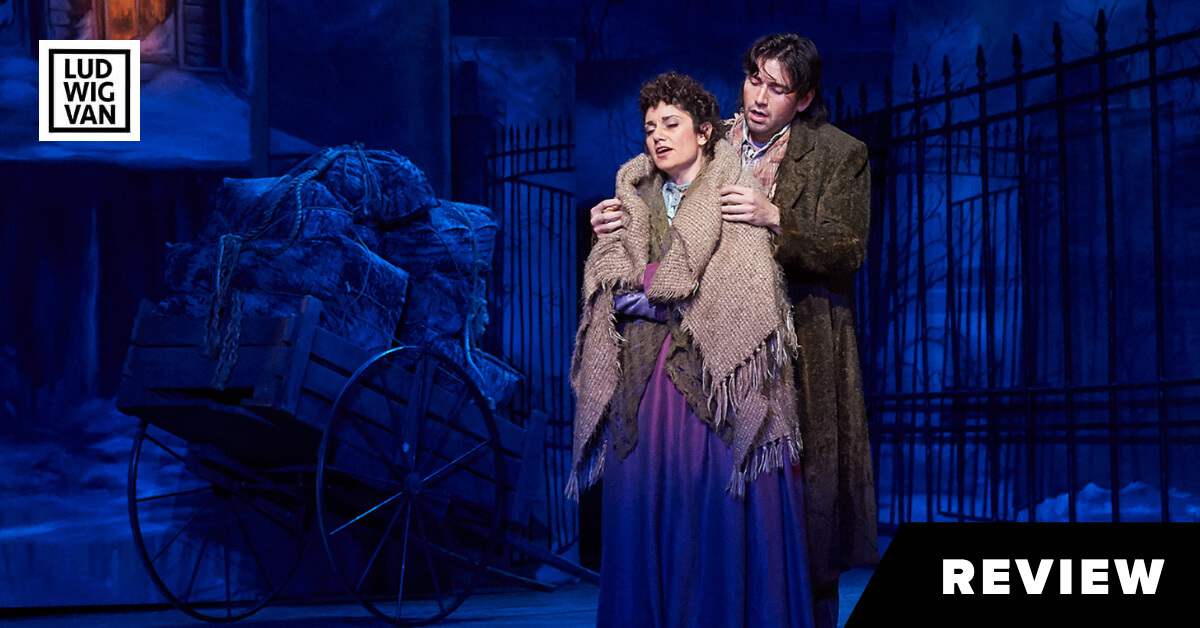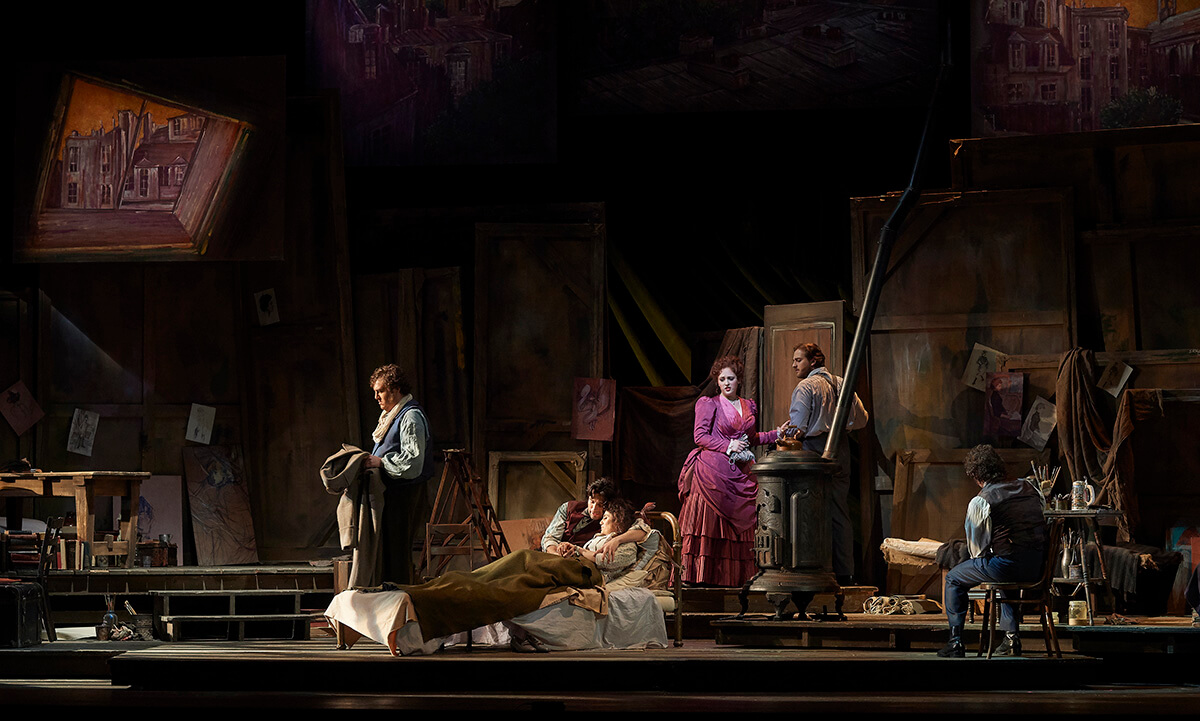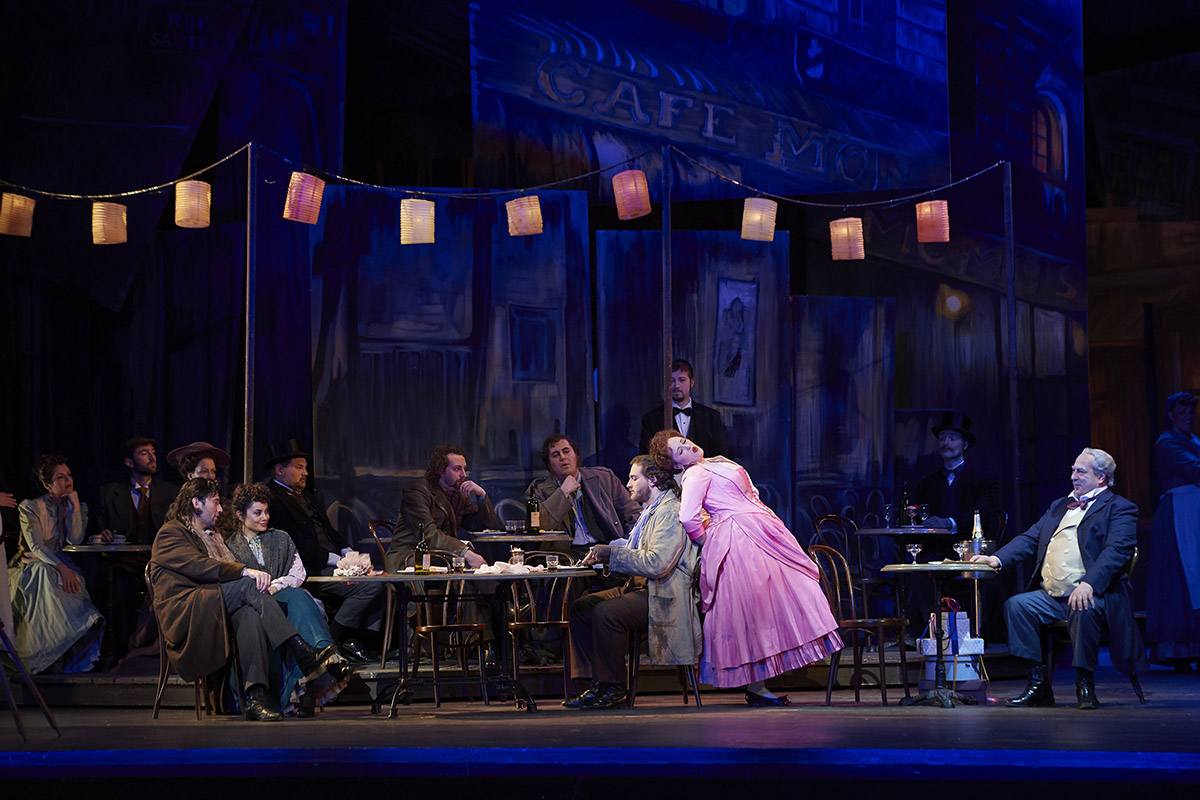It would be a mistake to think of the Canadian Opera Company’s alternate cast for La bohème as second-best. This cast shines!

Puccini: La bohème. Miriam Khalil (Mimi), Danika Lorèn (Musetta), Joshua Guerrero (Rodolfo), Andrzej Filonczyk (Marcello), Önay Köse (Colline); Joel Allison (Schaunard); Donato Di Stefano (Benoit/Alcindoro). COC Orchestra and Chorus, Paolo Carignani, conductor. Four Seasons Centre, May 5, 2019.
Opera audiences never seem to get tired of La bohème. Puccini’s most popular opera based on performance statistics from seasons 2004 to 2018, it’s ranked fourth in the world out of a total of 2000+ works. The story of young love never goes out of fashion, and when it’s set to such glorious music, with a seemingly endless supply of hummable tunes, what’s not to love?
Last staged by the Canadian Opera Company in 2013, it’s now back for another run of ten performances, with all the principal roles double-cast. The opening night cast received terrific notices, and based on the second performance, I couldn’t agree more. I was also curious about the alternate cast, which is often referred to as “the second cast.” It conjures up the image that it’s “second best.” But is it? I decided to find out.
The first of three alternate cast performances started yesterday, sung by homegrown talent as well as visiting artists new to the Company. The two leads are well known to COC audiences. Canadian soprano Miriam Khalil (Mimi) is a graduate of the COC Ensemble Studio a decade or so ago. She is partnered by the Rodolfo of American tenor Joshua Guerrero, who was the Duke of Mantua in last season’s Rigoletto.

The second pair of lovers is headed by yet another former Ensemble artist, the recently graduated soprano Danika Lorèn (Musetta). Her Marcello is Polish baritone Andrzej Filonczyk, making his COC debut. Completing the list of Bohemians are current Ensemble bass-baritone Joel Allison (Schaunard) and Turkish bass Önay Köse (Colline). Everything else stays the same. Given the current production has already been reviewed, I will be brief and focus my comments on the alternate cast.
La bohème is first and foremost an ensemble piece, populated by finely drawn characters. The cast this afternoon not only sounded great but looked like young struggling artists. At the risk of sounding ageist, this is one opera that requires youthful energy and dramatic verisimilitude, and this cast has it in spades. After his excellent Duke last season, tenor Joshua Guerrero makes a welcome return, his bright, clarion tenor with its Italianate timbre never sounded better. I also liked his heart-on-sleeve stage persona, perfect for the poet. An early highlight was supplied by his mellifluous “Che gelida manina,” complete with a nice high C.
He was an excellent partner for the luminous Mimi of Miriam Khalil, back with the company in a role tailormade for her. It’s a warm lyric soprano, at its best in the middle register, where her gleaming sound is much in evidence. Her “Addio, senza rancor” was lovely. She and Rodolfo are physically a good match, and their voices blend beautifully. I know it’s optional, but it’s always exciting when the tenor sings the high option in “O suave fanciulla,” joining Mimi in a high C — hey, when you’ve got it, flaunt it!

As Marcello, Polish lyric baritone Andrzej Filonczyk’s fresh, warm sound was a pleasure. (Now I really look forward to hearing his Fritz in Die Tote Stadt in Munich next season!) In terms of sheer volume of sound, nobody can beat Lucas Meachem in the other cast, but Filonczyk held his own. His painter isn’t all macho bluster, but a sensitive and vulnerable guy, as evidenced at the end of Act 3. As Musetta, soprano Danika Loren’s gleaming top was lovely in “Quando m’en vo.” Dramatically, her Musetta has just the right mix of flirtatiousness and the requisite heart of gold — well done.
I was also impressed by the Schaunard of ensemble bass-baritone Joel Allison, who sang with plenty of voice and a strong stage presence – this singer will go far. Turkish bass Önay Köse, a voice new to me, sang a fine Coat Song, but sadly — and undeservedly — he received no applause. If only the COC audience would stop sitting on their hands and wake up when they hear good singing…
Unlike the old, clunky Skalici production with its three intermissions, this Bohème is super-efficient. With a simple set on two small turntables, it took less than 60 seconds. Combined with a brisk tempo adopted by conductor Paolo Carignani, La bohème never seemed so short! In my recent Berlin trip, Act 3 Die Meistersinger alone lasted longer than anything Puccini composed — I guess I’m accustomed to marathons.
Four more performances to May 22 at the Four Seasons Centre. Details, here.
LUDWIG VAN TORONTO
Want more updates on classical music and opera news and reviews? Follow us on Facebook, Instagram or Twitter for all the latest.
- SCRUTINY | Opera Atelier’s All Is Love Makes Triumphal Return - April 15, 2024
- SCRUTINY | From The Heart: Ema Nikolovska And Charles Richard-Hamelin Offer Unique Program At Koerner Hall - March 26, 2024
- SCRUTINY | The Glenn Gould School Spring Opera Presents A Superb Dialogues Des Carmélites - March 22, 2024



